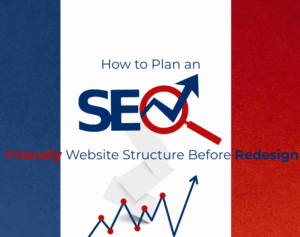
Unlocking the Potential of Your Business Through Exceptional Web Design
In today’s digital landscape, your website is often the first impression potential customers have of your business. An effective web design can significantly influence user experience and engagement, leading to higher conversion rates and ultimately driving business growth. At Utah Digital Marketing Experts, we believe that a well-designed website is not just a visual representation of your brand but a powerful tool for achieving your business goals.
Why Web Design Matters
- First Impressions Count The adage “you never get a second chance to make a first impression” holds true in the digital world. Research shows that users form an opinion about your website within milliseconds of landing on it. A visually appealing and professionally designed website can capture attention, while a cluttered or outdated site can drive visitors away. In fact, studies suggest that 94% of first impressions are design-related, highlighting the importance of aesthetics in web design.
- User Experience (UX) Is Key Effective web design prioritizes user experience. A well-structured website is easy to navigate, helping visitors find the information they need quickly. This not only enhances user satisfaction but also encourages them to spend more time on your site, increasing the likelihood of conversion. According to research, a well-designed user interface can improve conversion rates by up to 200%.
- Mobile Responsiveness With a significant portion of web traffic coming from mobile devices, having a mobile-responsive design is essential. A responsive website adapts to various screen sizes, ensuring a seamless experience for users regardless of the device they are using. This is crucial for retaining visitors and improving search engine rankings, as Google prioritizes mobile-friendly sites. In fact, mobile-friendly websites receive 88% more return visits.
- Building Trust and Credibility A professionally designed website instills trust in visitors. Elements like professional graphics, clear branding, and easy-to-find contact information contribute to a sense of credibility. In contrast, a poorly designed site can raise red flags for potential customers, causing them to question your business’s legitimacy. Trust is paramount in online interactions, and having a polished website can significantly enhance your brand’s reputation.
- SEO Optimization Web design and SEO go hand in hand. A well-optimized website is not only visually appealing but also structured to rank well in search engines. This includes optimizing page load speed, utilizing appropriate meta tags, and ensuring that your website’s architecture allows for easy crawling by search engine bots. A well-optimized site can lead to an increase in organic traffic by over 50%.
Key Elements of Effective Web Design
- Clear Branding Your website design should reflect your brand identity. This includes your logo, color scheme, and overall aesthetic. Consistent branding helps reinforce recognition and loyalty among your audience. Utilizing unique brand elements not only differentiates you from competitors but also creates a cohesive experience across all touchpoints.
- Intuitive Navigation A user-friendly navigation structure is crucial for guiding visitors through your site. Use clear headings, dropdown menus, and a search feature to make it easy for users to find what they’re looking for. If users struggle to navigate your site, they are more likely to leave without taking action, increasing your bounce rate.
- Compelling Content Content is king, and your website should showcase high-quality, relevant content that speaks to your target audience. This includes engaging text, images, and videos that provide value and encourage visitors to take action. Incorporating storytelling elements can make your content more relatable and memorable, fostering a deeper connection with your audience.
- Call to Action (CTA) Every page on your website should have a clear CTA that guides visitors toward the next step, whether that’s signing up for a newsletter, making a purchase, or contacting you for more information. Effective CTAs use action-oriented language and are strategically placed within your content to catch the reader’s attention.
- Loading Speed A slow-loading website can lead to high bounce rates and lost opportunities. Optimize images, utilize caching, and consider a Content Delivery Network (CDN) to improve your site’s loading speed. Research shows that a delay of just one second in page load time can result in a 7% reduction in conversions, emphasizing the importance of speed.
The Importance of Continuous Improvement
Web design is not a one-time task. As technology evolves and user preferences change, it’s essential to regularly update and improve your website. Conducting user testing, analyzing performance metrics, and gathering feedback can help you identify areas for enhancement. A/B testing different design elements can also provide insights into what resonates most with your audience, allowing you to make data-driven decisions.
Case Studies: Success Stories of Effective Web Design
- E-commerce Success A local e-commerce business revamped its website with a modern design, streamlined navigation, and high-quality product images. Within three months, their conversion rate increased by 35%, and overall sales saw a significant boost.
- Service-Based Business Transformation A service-based company focused on enhancing its website’s user experience. By incorporating clear CTAs and optimizing for mobile devices, they experienced a 50% increase in inquiries within six weeks.
Conclusion
Your website is one of your most valuable marketing assets. Investing in professional web design ensures you make a lasting first impression while maximizing conversions.
Schedule your consultation with Utah Digital Marketing Experts today to start building a website that works as hard as you do.




